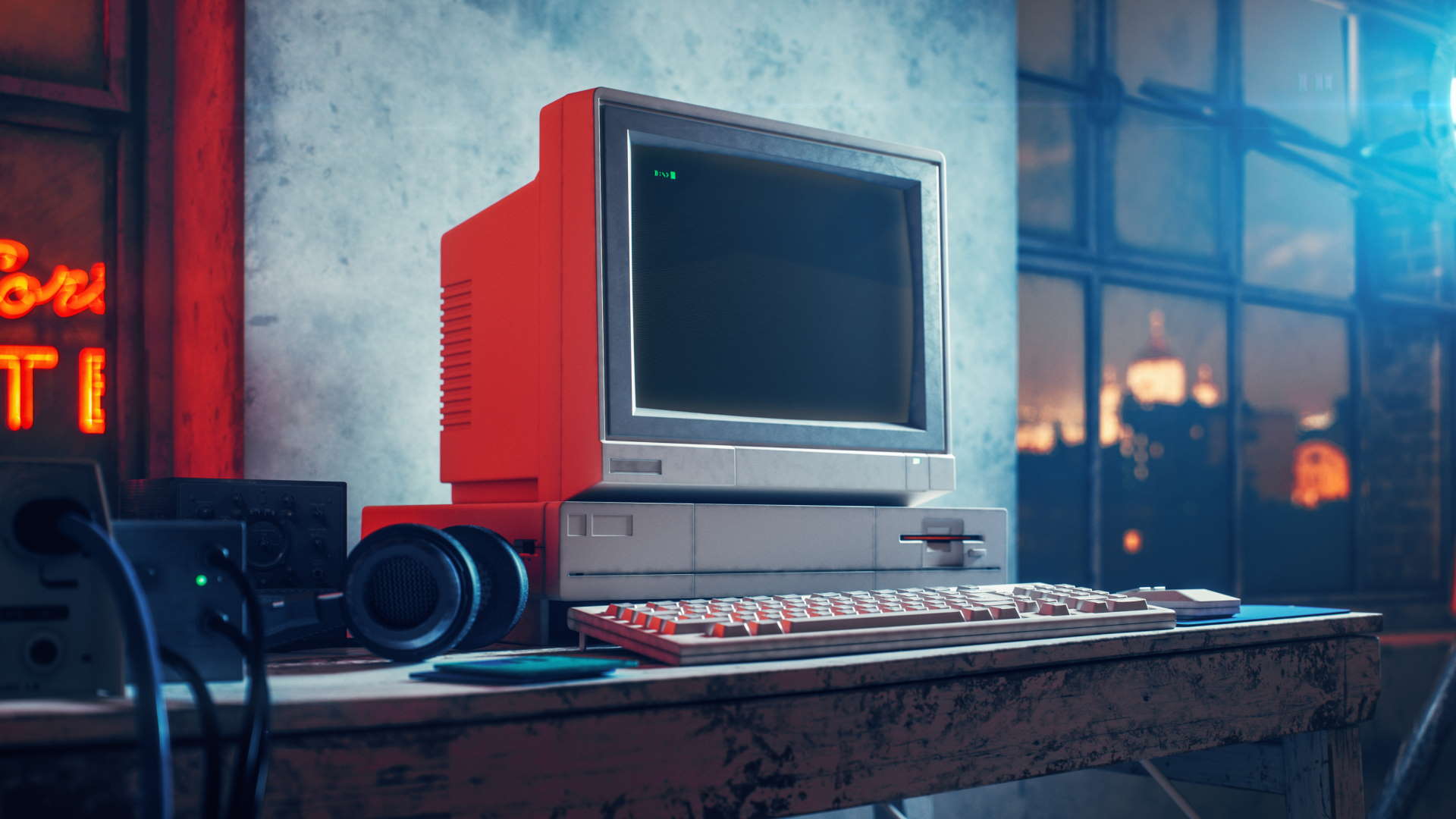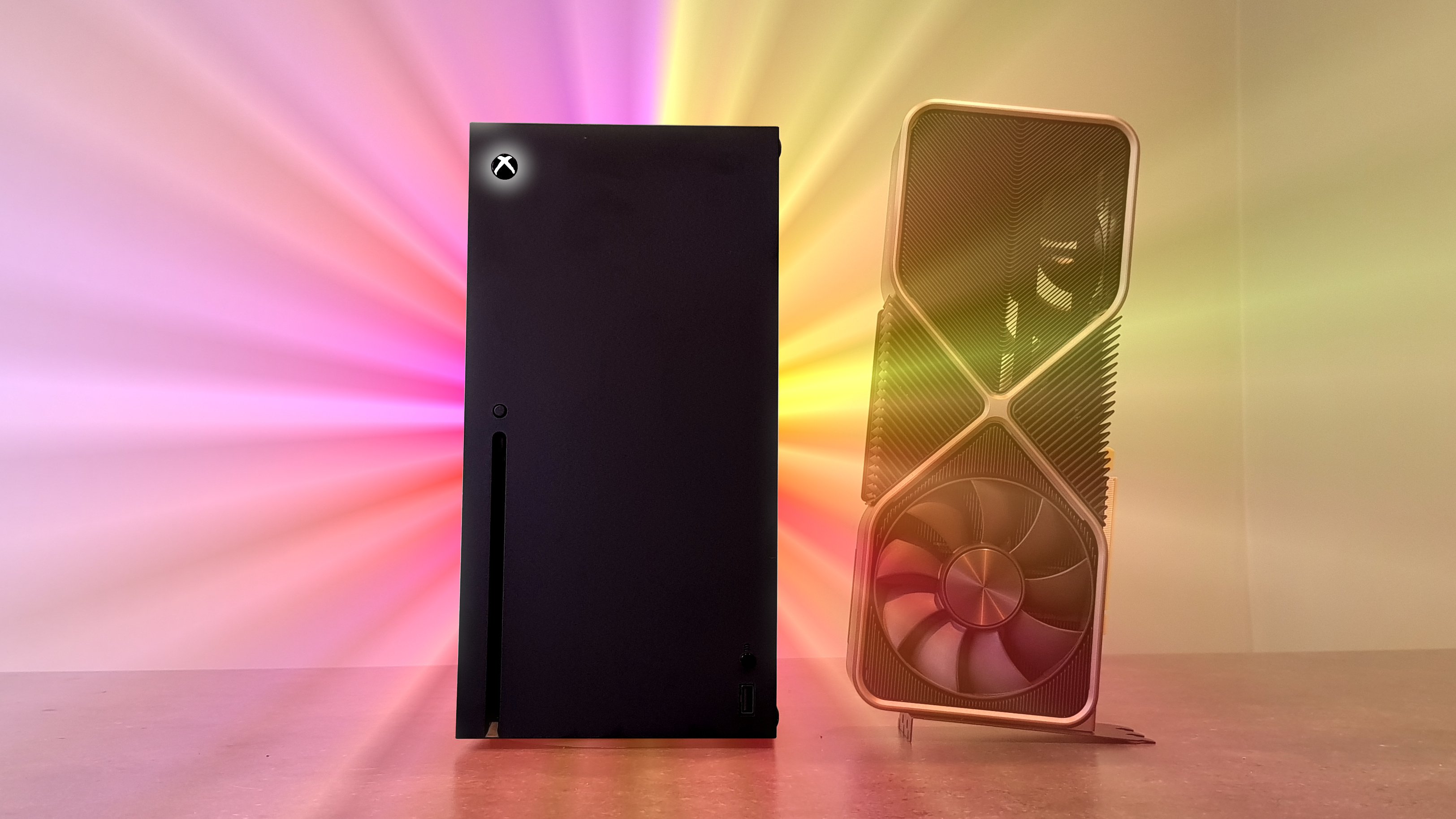Why 2021 was the worst year for PC gaming
Budget PC gaming is what marks the platform apart from the rest, and 2021 killed it dead.

When we were naively previewing 2021, still in the warm afterglow of the impressive GeForce RTX 3080 and Radeon RX 6800 XT launches, this year looked like it was to be the year of affordable PC gaming hardware. A golden year for bargain rigs, and one in the eye for the latest consoles. As it turned out, 2021 was the worst year for PC gaming. Why? Because the heartsblood of the hobby, the mainstream and budget market, has been summarily executed.
PC gaming means different things to different people, and that alone plays into what is so good about the hobby, and why no other platform can match it. On the one hand you have the, admittedly sometimes elitist, early adopters with cash to burn; those who will drop a grand on a new component as soon as it's launched simply so they can lay claim to having the latest and greatest rig known to humankind.
And that's awesome. The sheer power growling away inside the highest performance gaming PC will always be unmatched by anything our console cousins could dream of. And the scalability of PC games means the big titles will look their absolute best on our rigs when pushed to their full potential.
But it's precisely that scalability that adds to what makes PC gaming truly special to me. Because on the other hand you have the budget builders, the dedicated gamers working hard to squeeze as much performance out of the most affordable parts on those exact same games.
When you've got a fat wallet it's easy to nail 4K gaming at silky smooth frame rates, but when you're working to a real tight budget you've got to put in the hours researching parts, compromising on some, and finally optimising the hell out of your games and your system. It's a challenge, but a hugely rewarding one, especially when you could often end up with a budget gaming PC that delivers frame rates to make an Xbox One blush.
That's how it's been in the past, and as a general rule I'd say going into the second year of a new console generation you could expect to put together a gaming PC for the same cash, with equal or better performance, compared with a current-gen gamebox. Prices go down, and new mainstream and budget parts get released to make that PC build job easier.
Not with this generation, not with the Series X or PS5. If you want 4K gaming at $500 that's still where the smart money goes.
Keep up to date with the most important stories and the best deals, as picked by the PC Gamer team.

In this, the darkest possible timeline, there's no financial imperative to 'waste' production capacity on cheaper products
Since demand started to ramp up for components and PCs in general, in 2020, that trend has continued into this year, and looks set to be the new normal throughout 2022—maybe into 2023 as well. Combined with finite manufacturing capacity, disruption to the supply chain, and the inexorable rise of cryptocurrency—again—, it has meant key components, such as graphics cards, are out of stock the instant they're released, and subsequently rare as donkey eggs.
That then becomes fertile ground for bots and ebay resellers slapping hugely inflated price tags on our favourite components, which has made it a nightmare trying to upgrade or build a new PC over the last couple of years.
That's all common knowledge, and you're likely living that pain as a PC gamer yourself right now. But a lesser mentioned side effect of the chip shortage, sky-high demand, and the brutally incessant pandemic, is the impact it's had on the choices manufacturers have made about what they produce, and what their product lines actually look like.
When everything you make sells out the instant you ship it, and you only have finite manufacturing capacity and chip supply, there is little incentive to create cheaper, traditionally high-volume products. If you sell as many $1,000 GPUs as your $400 options, why would you dip any lower down the potential performance stack?
Normally we'd have seen sub-$200 cards for budget gamers by now, those taking the latest architecture, with a few nips and tucks here and there, delivering impressive bang for buck. But the maths no longer adds up. The traditional understanding is that you make a lot of $200 GPUs, aiming to sell a whole load of them because you'll sell fewer higher priced options. But in this, the darkest possible timeline, there's no financial imperative to 'waste' production capacity on cheaper products when you could make the same number of more expensive chips and still sell the same number, but with a far higher return.
The fact it's economically understandable doesn't make it any less saddening or maddening. Capitalism, she is a harsh mistress.
And if you want some raw numbers to back that up: a year or so after the GeForce RTX 2080 launched Nvidia had released five sub-$300 GPUs, each a step up over their relevant forebears. You could even make that six if you counted the price drop to $299 for the RTX 2060 at the beginning of 2020.
On the AMD side, partly due to a lower flagship price, it had released seven of its own sub-$300 GPUs in the year after it released the Radeon RX 5700 XT, if you count the various OEM versions of its first-gen RDNA cards, that is.
And where does the number stand a year or so after the launch of the GeForce RTX 3080 and Radeon RX 6800 XT? At a big fat zero. Nada. Zilch. There are no sub-$300 GPUs in this generation.

And there's no alternative either. The crypto mining boom-bust-boom cycle has resulted in literally any GPU being picked up by enterprising ethereum diggers, and that means the budget gamer's last resort, ebay, is a barren wasteland when it comes to affordable last-gen graphics cards, too.
This makes it all but impossible to build a budget gaming rig worth a damn. Is there any hope on the horizon? Well, yes. Though let me just leave a quiet 'potentially' hanging in the air...
There is the potential for a budget gaming renaissance in 2022
There may yet be new Nvidia and AMD GPUs launched in the coming year with lower price tags and actual availability, and Intel will finally be joining the race with its own range of discrete GPUs as well. That will give us three chances at affordable, competitive graphics cards, and with SSD prices going down, DDR4 being well-priced right now, and Intel's budget CPUs being outstanding value, there is very much the potential for a budget gaming renaissance in 2022.
With CES rolling around in January, traditionally where AMD likes to talk about mobile chips and new APUs, there are rumours of a Rembrandt APU design sporting RDNA 2 GPU cores. That could deliver low-cost setups which don't need a discrete graphics card to be able to deliver 1080p gaming performance, offering another affordable route into the hobby.
We've also got the Steam Deck in the pipe to release in February, with a console-level price point, and the potential for both handheld and docked PC gaming from a SteamOS-based system.
While these plans could salve our budget PC gaming woes, there is still the very real spectre of the supply shortage. The Steam Deck has already been delayed from a December launch to February, with Valve citing "global supply chain issues" as the reason. Initial stock has already been taken up, too, so if you haven't already bought a ticket to the Deck launch day funtimes you're not going to be bagging yourself the Steamy handheld anytime soon.

And whether we're talking GPU or APU, AMD is still utterly reliant on TSMC for its manufacturing (as is Valve thanks to using an AMD APU in the Deck itself) which means that it's fighting with almost every other company on the planet for chip fabrication capacity from the Taiwanese foundry. That means finite supply, which will mean figuring out how to manage those cheaper components alongside its higher-end GPUs and CPUs, as well as all the chips AMD needs to have made to supply both Sony and Microsoft for the PS5 and Xbox Series X/S consoles.
Despite its own broad manufacturing capabilities, Intel, too, is employing the contract manufacturing services of TSMC for its upcoming range of Xe-based Alchemist graphics cards.
That's a multi-manufacturer juggling act which could end up with the blue and red teams delivering theoretically fantastic budget graphics cards and APUs, but without the volume for any of it to matter.
Then there's Nvidia, which isn't beholden to TSMC, but to Samsung's manufacturing efforts. To now, that has anecdotally meant you're more likely to be able to track down a new GeForce GPU in the wild than an AMD one, and the same could ring true for the budget cards, too. Though supply will still be tight, and it will continue to be a battle to find one at MSRP throughout 2022.
So there is faint hope for a return of the budget gaming PC market with the potential for key components with reasonable price tags in the future. And that's vital because it's not just about the ultra-enthusiast world of monster rigs, PC gaming is inclusive. It's about giving everyone with a PC the chance to be involved in the hobby, whether they want to play Warzone or Wildermyth, whether they can afford to spend $1,000 on a graphics card every 12 months or they have to agonise over whether they can drop $50 on a new gaming headset.
I've certainly derived far more pleasure from carefully calculating and building a budget rig that punches above its weight class, than from slapping together a few high-powered parts and calling it a day. And I'm desperate for a return to the days when that will be possible again.

Dave has been gaming since the days of Zaxxon and Lady Bug on the Colecovision, and code books for the Commodore Vic 20 (Death Race 2000!). He built his first gaming PC at the tender age of 16, and finally finished bug-fixing the Cyrix-based system around a year later. When he dropped it out of the window. He first started writing for Official PlayStation Magazine and Xbox World many decades ago, then moved onto PC Format full-time, then PC Gamer, TechRadar, and T3 among others. Now he's back, writing about the nightmarish graphics card market, CPUs with more cores than sense, gaming laptops hotter than the sun, and SSDs more capacious than a Cybertruck.

